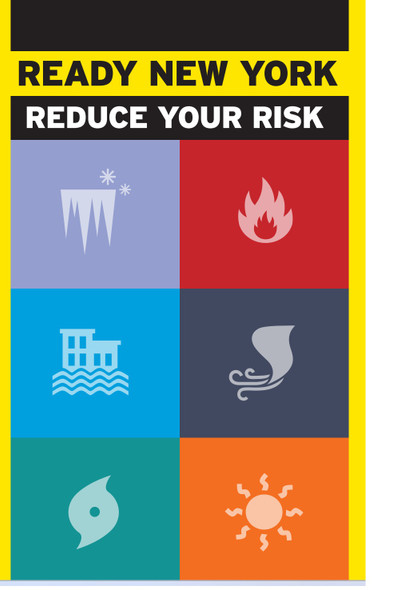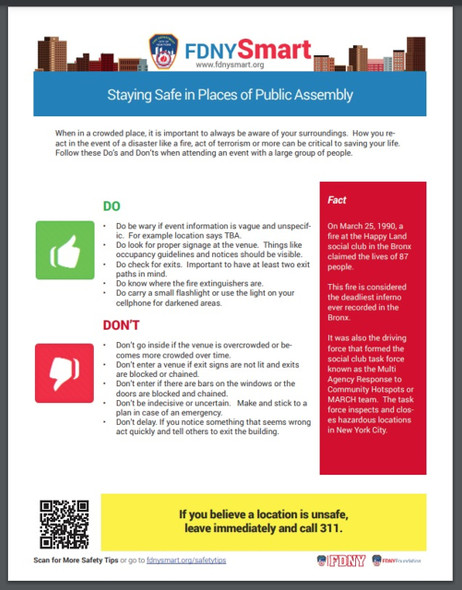hpdsigns.nyc
Creating a Family Emergency Plan: Working Together to Stay Safe (pdf file)
- SKU:
- Creating a Family Emergency Plan: Working Together to Stay Safe
- UPC:
- MPN:
- Creating a Family Emergency Plan
Description
Creating a Family Emergency Plan: Working Together to Stay Safe
Emergencies can happen at any time, and being prepared as a family is essential. Developing a solid emergency plan and assembling necessary supplies can make all the difference in keeping everyone safe. Here’s a step-by-step guide to help your household work together to create an effective emergency plan, understand the hazards, practice disaster scenarios, identify reunification points, and assemble the right emergency supplies.
1. Work Together to Create an Emergency Plan
Everyone in the home needs to be involved in creating an emergency plan. This ensures that all family members understand the plan and are prepared to act when needed. Gather your household and discuss:
- Potential Hazards: Identify the types of emergencies you may face based on your location, such as hurricanes, earthquakes, fires, floods, or power outages. Make sure everyone knows the specific dangers of each.
- Roles and Responsibilities: Assign tasks to each family member based on age and ability. For example, an adult may be in charge of turning off utilities, while an older child may help care for younger siblings.
- Communication Plan: Determine how you will communicate during and after an emergency, especially if cell phone networks are down. Establish a group messaging app, or designate specific out-of-area contacts for updates.
2. Identify Safe Locations and Reunification Points
In an emergency, your family may not be together. Have multiple safe locations and reunification plans:
- Shelter-in-Place: Identify the safest areas in your home to stay during events like tornadoes or hurricanes.
- Evacuation Routes: Plan multiple escape routes from your home and practice using them. Map out routes to local shelters if evacuation is necessary.
- Meeting Places: Set up a designated spot nearby (like a neighbor's house) where your family can reunite if you need to evacuate your home. Also, choose a distant location (such as a friend or family member’s house in another town or city) where you can go if local conditions are unsafe.
- Out-of-Area Contact: Assign a family member or close friend who lives outside your region as your primary contact. If local communication systems fail, each family member can check in with this person to relay their safety and location.
3. Assemble and Maintain Emergency Supplies
Having the correct emergency supplies at home, in your car, and in a grab-and-go kit is essential for survival in an emergency. Here’s what to include:
At Home:
- Water: At least one gallon per person per day for three days.
- Food: Non-perishable items, enough for three days. Don’t forget pets!
- First Aid Kit: Include bandages, antiseptic, scissors, and any necessary medications.
- Tools: A multi-tool, flashlight, batteries, and a whistle to signal for help.
- Personal Hygiene Items: Toiletries, moist towelettes, garbage bags.
- Clothing and Blankets: Warm clothes and blankets to stay dry and warm.
- Important Documents: Keep copies of insurance policies, identification, and bank account records in a waterproof container.
- Cash: In small denominations, as ATMs may not work.
- Cell Phone and Chargers: Include a backup battery or portable charger.
Grab-and-Go Bag:
This portable kit should be easy to grab if you need to evacuate quickly:
- Water and Snacks: Bottled water and energy bars.
- Important Documents: Copies of your ID, insurance cards, and family contacts.
- Clothing: One set of clothes per person.
- First Aid Kit: A smaller version of your home kit with essential medications.
- Multi-Tool and Flashlight: For immediate use in case of evacuation.
4. Practice Your Plan with Disaster Drills
Creating a plan is just the first step; practicing it ensures everyone knows what to do when disaster strikes. Hold regular family drills to simulate emergencies:
- Fire Drills: Practice evacuating your home and meeting at your designated safe spot.
- Earthquake Drills: Teach children to “drop, cover, and hold on” and identify safe areas to shelter.
- Evacuation Drills: Practice grabbing your go-bag and heading to your reunification location.
Review your plan regularly and make adjustments as needed. For example, as children grow older, they may be able to take on more responsibilities during a crisis.
5. Stay Informed
In addition to your family plan, stay informed about emergency updates:
- Local Alerts: Sign up for local emergency alerts on your phone or subscribe to local news channels.
- Weather Reports: Monitor weather forecasts, especially during storm seasons.
- Community Resources: Know where your nearest shelters, hospitals, and emergency response teams are located.
Final Thoughts
Being prepared for an emergency requires teamwork and coordination. By creating an emergency plan, identifying hazards, assembling supplies, and practicing drills, you can ensure that your family is ready to respond calmly and effectively when disaster strikes. Working together as a household not only increases safety but also fosters a sense of responsibility and preparedness that can save lives.
Legal Disclaimer
Business Representation We are a small, family-owned and operated business based in Brooklyn, New York. Please note that we are not affiliated with, sponsored by, or connected to the City of New York or any of its agencies. The website, products, services, and any hyperlinks found on our website are not endorsed by, approved by the City of New York or any of its agencies, including but not limited to the New York City Department of Housing Preservation and Development (HPD), Department of Buildings (DOB), Department of Transportation (DOT), Department of Sanitation (DSNY), and the Fire Department of New York (FDNY). We are also not affiliated with any federal, state, or local government agencies in any way.
Disclaimer of Legal Accuracy and Timeliness The information, codes, and due dates provided on this website or any related documentation may not be the most up-to-date version. Laws, regulations, and requirements may change, and the information here may not reflect the most current version. It is the user’s responsibility to verify the accuracy, completeness, and adequacy of the information contained on this site or any information linked to government sites. We do not guarantee or warrant the accuracy of the information presented, and we encourage you to check with official sources, such as state or federal agencies, for the most current information.
User Responsibility for Compliance Please note that legal requirements can vary based on your location and intended use of the products or services. It is solely the responsibility of the customer or user to ensure that they are in compliance with all applicable state, federal, local, and municipal laws and regulations. We make no warranty or representation regarding the suitability or sufficiency of the information provided on this website, including its use in compliance with any law.
No Legal or Professional Advice The information provided on this website and in any related materials is intended for general informational purposes only. It should not be interpreted as legal advice, professional advice, or a statement of law. For specific legal guidance or advice regarding your situation, we recommend consulting with a qualified attorney or other professional.
For more detailed information, please refer directly to the applicable laws and regulations for your state, city, and municipality.
Related Products

Tenant / owner emergency plan-" my emergency plan" New york (pdf file)
hpdsigns.nyc


Emergency Preparedness/ Evacuation Planning Checklist for Tenant (pdf file)
hpdsigns.nyc

Charge Safe, Ride Safe: NYC’s Electric Micromobility Action Plan (PDF file)
hpdsigns.nyc


Emergency plan owner / Renter 2023 (pdf)
hpdsigns.nyc


staying safe in places of public assembly (PDF)
hpdsigns.nyc

